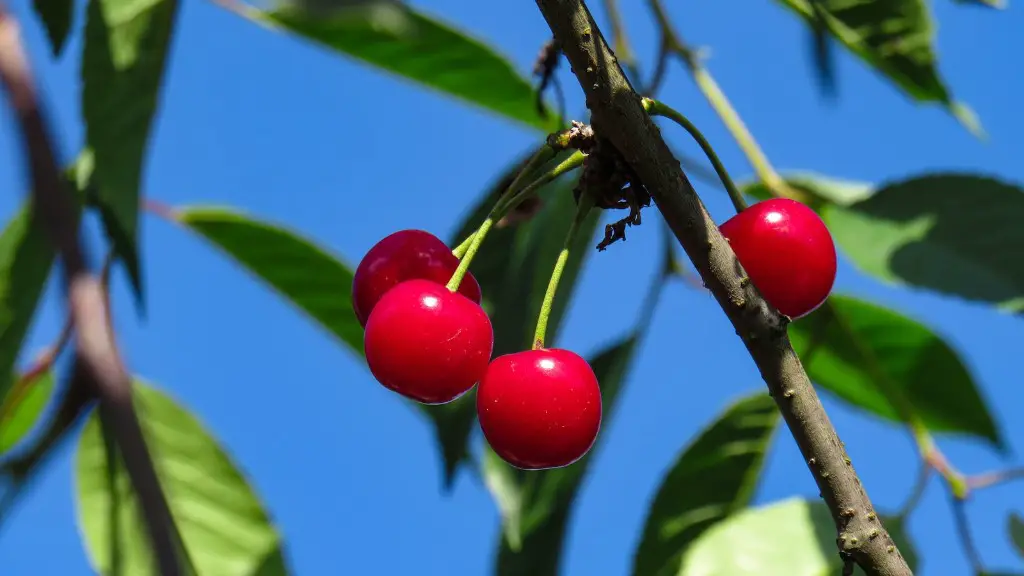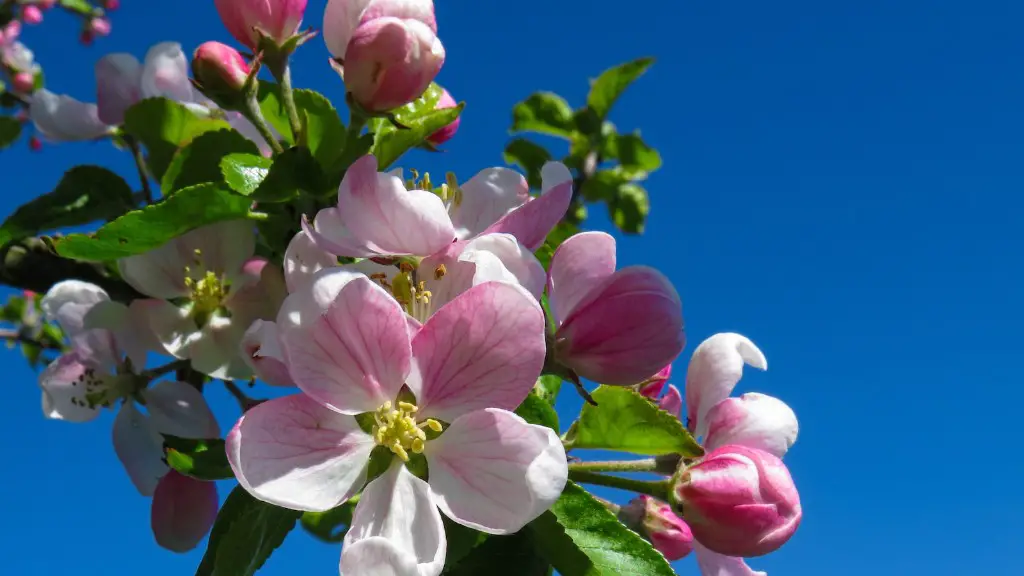Selecting the Right Cherry Tree
Picking cherries off of a cherry tree is a skill that must be learned, and learning it begins with selecting the right cherry tree. The tree should be mature and correctly identified. There are two main types of cherry trees: sweet cherries (Prunus avium) and tart cherries (Prunus cerasus). Sweet cherries are best for making jams and jellies, while tart cherries are better for baking.
An expert arborist will be able to assist in selecting the best tree for the climate and region. Consider size and shape of canopy, as well as sun exposure. For the best crop, the cherry tree should receive a minimum of six hours of direct sunlight throughout the day, especially during its flowering season. It’s important to pick a spot that is not flooded or prone to high winds, which can be detrimental to your cherry tree.
Creating the Correct Environment
After selecting the right cherry tree, the next step is to create the correct environment in which to cultivate it. Proper soil composition is essential to ensuring that the cherry tree is producing delicious and abundant fruits. The ideal soil should be loose and airy, and should not be too wet or too dry. Regular fertilization and pruning are necessary to keep your cherry tree healthy.
The tree should also be given ample water, especially during the summer months when temperatures are warming or the soil is dry. It’s important to irrigate the tree sparingly, as too much water can cause the fruits to split and spoil.
Harvesting the Fruit
The best time to pick cherries from the cherry tree is when they are ripe. There is no exact science as to when the cherries are ripe, as it is largely dependent on the type of cherry tree being harvested and the climate in which it is being grown. As a general rule, cherries can be harvested when they turn bright red color.
When harvesting cherries, always use a ladder to reach the higher branches of the tree. Start by gently shaking the branches and watch for cherries to start dropping. Then use gloves, to protect your hands, and gently pluck the cherries from their stems. This can be done by hand or with a small clipper.
Preparing the Cherries for Long-Term Storage
Once the cherries are picked from the tree, they must be prepared for long-term storage. The best way to do this is by cleaning the cherries gently and patting them dry. If storing in an airtight container, wrap the cherries in a single layer of paper towels. This will absorb any remaining moisture and prevent spoilage.
It is important to store the picked cherries in the refrigerator, as this will slow down the ripening process and extend their shelf life. Cherries will usually last up to two weeks when stored this way.
Making the Most of Your Cherry Bounty
Now that the cherries are harvested, it’s time to make the most of the bounty. There are several ways to enjoy cherries, both fresh and cooked. Fresh cherries can be enjoyed as a snack or as a topping to yogurt, cereal, and oatmeal.
For cooked recipes, there are several options. Cherries can be canned, frozen, or dried. They can also be used to make jams, jellies, pies, and cobblers.
Preserving the Tree for Future Harvesting
Rather than attempting to store the cherries for future use, it is important to instead focus on preserving the health and vitality of the cherry tree for future harvesting. This can be done by regularly pruning the tree to remove any dead or diseased branches in order to promote new growth.
Regular application of fertilizer and compost can help alleviate nutrient deficiencies. When trimming, be sure to only remove dead or diseased branches, as otherwise the tree could be weakened or damaged.
Preventing Pest and Disease Damage
Finally, it is important to take steps to prevent pest and disease damage to the cherry tree. Some of the most common pests that attack cherry trees are aphids, scale insects, and cherry fruit fly. These pests can damage the flower and leaf buds, and can even cause the fruit to drop prematurely.
In order to prevent pest damage, it is important to monitor the cherry tree regularly and to pay attention to any signs of infestation. According to PlantPathology.org, if noticed early, pest infestations can be controlled with a variety of cultural practices, pesticide sprays, and biological controls.
Identifying and Utilizing Pollinators
One of the most important tasks involved in harvesting and preserving cherries is identifying and utilizing pollinators to assist with the process. Cherries are self-pollinating, meaning that insects are not required for this part of the process. However, they can still help quite a bit, as they can carry pollen from one flower to another, ensuring that all of the flowers on the cherry tree are pollinated.
The main pollinators for cherry trees are honeybees, bumblebees, and solitary bees. Once a pollinator is identified, the best course of action is to ensure that their habitat is undisturbed. This can be done by leaving a few areas near the tree undisturbed so that the pollinators have a place to rest and nest.
Using Trellis or Support Systems
In order to take full advantage of the cherry harvest, it can be beneficial to use trellises or support systems to provide stability and support to the tree and its branches. This will allow the branches to bear more fruit and reduce the risk of breakage or damage to the fruit during harvesting.
When setting up a trellis or other support system, it’s important to use a material that is strong and durable, such as wire mesh or tension ropes. It is also important to ensure that the trellis is properly secured and spaced correctly, as this will prevent the branches from sagging or being damaged.
Apple Maggot Control
The apple maggot is one of the most destructive pests of cherry trees. To prevent an infestation, it’s important to practice regular apple maggot inspections and to use traps or other control methods if one is found.
The best time to check for maggots is in late summer or fall, when the larvae have just hatched and the adults are actively laying eggs. Traps should be set up in the top third of the canopy and should be checked regularly. Any apple maggots found should be immediately destroyed.
Using the Right Picking Container
In order to make the cherry-picking process as easy and efficient as possible, it is essential to use the right picking container. The container should be large enough to hold between five and ten pounds of cherries, yet light enough to easily carry.
It is also important to ensure that the container is stable and that it has a secure lid. This will prevent the cherries from spilling or being damaged. It is also a good idea to choose a container that is easy to clean and can be reused for the next harvest.


